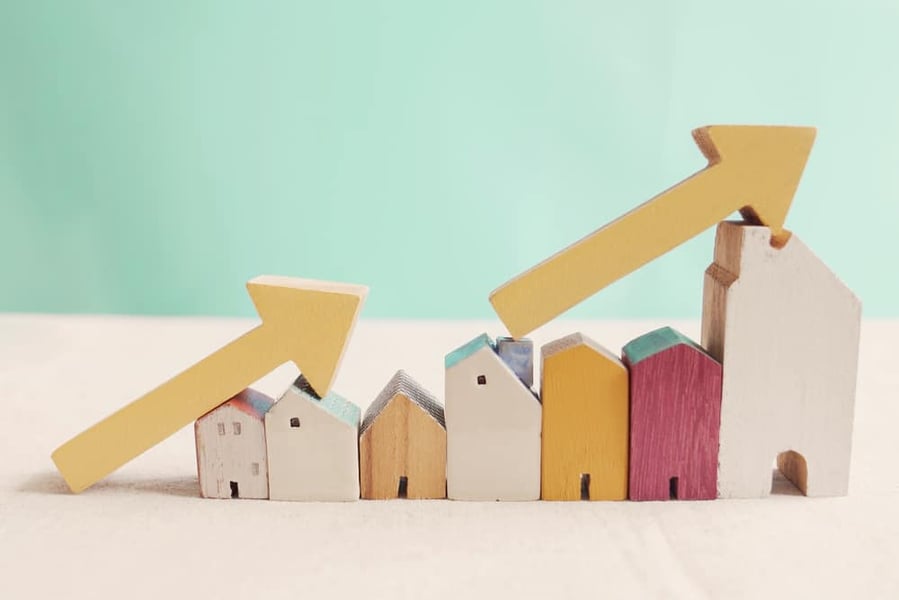Despite falling from a record high in June, the average UK house price (£256,000) increased by 8.0% in July 2021 compared with the previous year.

House price growth was three times the national rate in some rural and coastal hotspots in July, such as Conwy in North Wales (25.0%), North Devon (22.5%) and Richmondshire in the Yorkshire Dales (21.4%), according to data from the Office for National Statistics (ONS).
Despite falling from a record high in June, the average UK house price (£256,000) increased by 8.0% in July 2021 compared with the previous year.
Reinforcing the trend of higher demand and price growth in rural and coastal areas over built up cities, the seven areas that recorded house price falls in July were all London boroughs.
The ONS said that house prices have increased partly because of temporary changes to taxes paid on property purchases, including stamp duty in England and Northern Ireland, but also reflect a shift in consumer preferences, with price growth being driven by rural and coastal areas.
Prospective homebuyers are seeking more space, with prices for detached houses (9.0% growth in July) consistently rising faster than terraced houses (7.7%) or flats (6.1%).
Karen Noye, mortgage expert at Quilter, said: "It’s no secret that the pandemic has vastly changed how we view where we live and work.
"After months of being in lockdown and even the threat of fines for travelling to the UK’s beauty spots people are understandably looking to up sticks from the city and move to more rural or coastal regions.
"The laws of supply and demand dictate that when there is minimal housing stock but a lot of desire house prices naturally start to climb.
"However, what this publication from the ONS shows is that some of the things that have drawn people to certain areas such a place’s amenities will struggle to attract staff as young people get priced out of the area.
"According to today’s statistics, house prices were rising at three times the national rate in some rural and coastal areas in July, meaning that young and low paid workers are simply unable to buy a house in the towns and villages they might have grown up in as they surge in popularity.
"In turn this will lead to some of these types of places finding it difficult to fill vacancies and while the natural beauty won’t change some of the other reasons that have attracted newcomers like the amenities and hospitality will find it tough to get back on their feet following the pandemic.
"The stamp duty holiday is soon to go completely and that will likely stabilise house prices if not cause them to drop nationally but the shifts in our working habits are unlikely to change quickly, if at all.
"Therefore, there is a very real risk of house prices in these regions staying inflated for some time as people take advantage of a new hybrid working style and are able to move further away from the office."
Nathan Emerson, CEO of Propertymark, said:“The pandemic has been a catalyst for change in many people’s lives and we are now seeing a rush for larger properties, more outside space and more idyllic living.
"Couple this with low interest rates and the stamp duty holiday and what we have seen is a tremendous amount of pressure on rural and coastal areas whose housing provision and infrastructure are not designed for such an influx.
"We’ve also seen house prices in these areas inflate; this is because many properties have seen such demand that they have gone to best and finals with up to 19 buyers per home.
"As buyers from out of area bring with them higher wages, the bidding wars have been astronomical in certain hot spots.
"Other areas, mainly cities such as London, have seen a dramatic decrease in demand and therefore low prices.
"Because of this, we have seen these places become more attractive for investors.”



